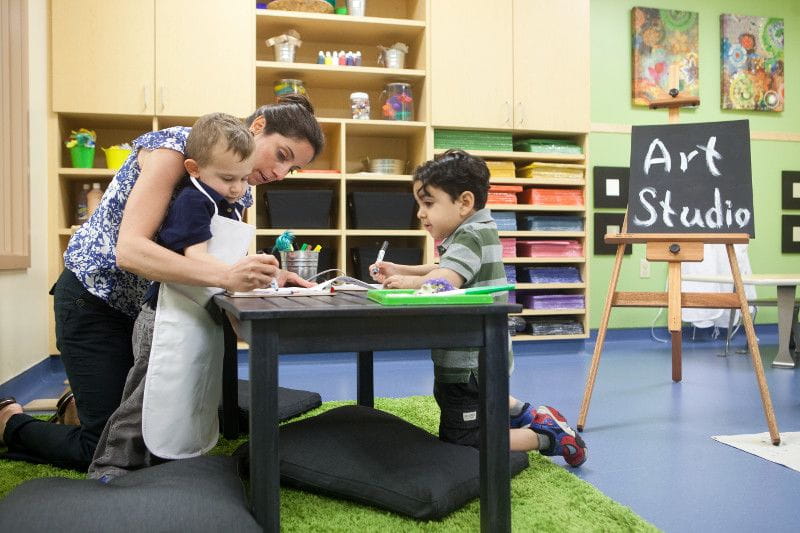Employers right now have a child care problem. A big one.
It’s not just the shortage of available spots at issue (that’s a given); it’s how to provide child care to employees in a way that reaches them the way people work today — hybrid, remote, in-office, or all of the above.
The disparity of locations has led to the idea that DIY is your only answer.
“The flexibility of using caregivers who can come into family’s homes,” goes one argument skeptical of centers, “will likely appeal to manufacturing employees who need coverage for shift work and non-traditional schedules.”
There’s only one problem with that theory: where are you going to find those caregivers?
That’s no small thing. Half the country, according to the Center for American Progress, is a child care desert. In those places, there is no child care supply. In other words, you can’t just give people the means to book supply – you have to create supply. A center is one way to do that.
Consider the experience of one manufacturer. At that company, parents were so challenged to find care, they were leaving their homes at 4:30 in the morning and driving 30 miles out of their way just to find someone who could help during manufacturing’s unusual hours – a challenge that was affecting the number of women they attracted. That changed when the company built a center that both delivered supply and matched the hours people needed to work.
And right there is the myth about flexibility – that it’s about giving employees financial resources to (try) to find care for their individual schedules. Real flexibility in child care is about creating the actual supply, and then pivoting so you can serve multiple needs. Such as?
Hybrid working. A post-pandemic evolution is centers that structure their offerings by work schedule – perhaps a choice between a Monday/Wednesday/Friday window or a Tuesday/Thursday option. Fulltime is of course still available. Either way, it’s a big carrot for people who want to be in the office. “The center definitely brought me back in,” says Lauren, a mother of two girls, who says she bought a house specifically for its access to the center. “And btw,” she adds, “having them out of the house is great for when I’m working at home, too.”
Daily school schedules: Infants and preschoolers aren’t the business world’s only child care concern. At the above company, parents were also doing backflips trying to sync their frontline operating schedule with their older children’s school day. The pivot was a center with a school bus stop. That answered the questions of where the youngest children would go all day, where older children would go to connect with school, and how parents could pull it off without breaking a sweat.
Emergency care needs. Nannies aren’t an inoculation against care emergencies since they have days off, too. Build your center smartly with back-up spaces and a reservation system, and that same center can address occasional needs as well as your regular families. “On the days our nanny wasn’t available,” recalls one dad, “we’d pack up the kids and I’d take them to the center near my office. It worked great.”
School vacations. The average academic calendar year has about 80 fewer days than work days. The center with the school bus stop addresses that by opening services to kids as old as fifth grade — including a summer camp for the long period between the last school bell of one year and the first one of the next. And here’s an extra benefit: having the reservation system in place allows you to leverage the same network relationships beyond children to help people with elder care.
Full-time remote workers. Truly flexible programs work in synch with your whole benefits platform so people can use all the resources they have in multiple ways. One example allows employees to trade unused back-up days toward discounts at another center near where they live.
None of the above means there’s no place for DIY. There absolutely is. Some parents would love to have free access to a membership database to help them find not only child care, but also household, elder care, and other important help. The important thing is that it’s not one or the other. Truly solving your child care issues requires understanding your business – where people are, how they work, and what they need – and then using everything you have creatively.
That’s how you address your problem. Ask people to solve it themselves, and you have a solution that’s likely just in name only.




